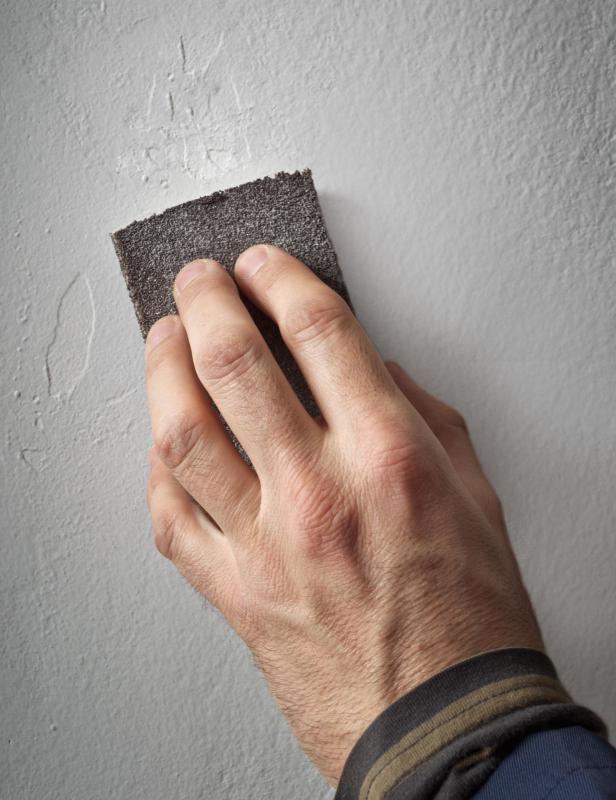At HomeQuestionsAnswered, we're committed to delivering accurate, trustworthy information. Our expert-authored content is rigorously fact-checked and sourced from credible authorities. Discover how we uphold the highest standards in providing you with reliable knowledge.
What is Drywall?
Drywall is a construction product commonly used to finish building interiors. For hundreds of years prior to its development, the interior walls of buildings were usually made of plaster. This was applied in layers over narrow boards called laths that were nailed directly to the studs. The plaster was pressed into gaps between the laths to make it adhere, and was built up in progressive layers. This building technique called for a fair degree of craftsmanship and experience, but allowed the builder to incorporate interesting textures or decorations as the plaster was worked.
In the mid-twentieth century, drywall, also called plasterboard, sheetrock or gypsum board, came into widespread use, and now almost all buildings have drywall walls. Drywall has a number of advantages over plaster, ease of installation being the most obvious. Any reasonably handy person can refinish a room with drywall, and you don't have to take any training or join a guild to learn how to do it.

Drywall is made using gypsum plaster, which is then covered on both sides by fiberglass matting or heavyweight paper. Depending on the manufacturer, certain additions, such as anti-mildew and fire-resistant materials, are mixed with the gypsum plaster before applying the paper.
Finishing an unfinished basement room with drywall, for instance, can be the work of a weekend. The drywall, which comes in sheets that are designed for modern house codes, can simply be nailed to the standing studs. Cutting holes for outlets, wall switches and light fixtures can be easily done with a keyhole saw - make your measurements carefully.

Once the drywall is up, the joins between sheets are covered with a special tape, and the tape and the nails are covered with a spackle-like paste called joint compound. The joint compound must be allowed to fully dry on the drywall, after which you can sand it to smoothness. If done properly, the tape and joint compound process will hide the seams between sheets of drywall.

A common household blemish is the popped nail. This often appears in the ceiling, where a nail holding the drywall in place has popped out, or perhaps the joint compound has flaked off and left the nail visible. This is easy to fix; if the nail has popped out altogether, reposition it an inch or so away and nail it back in again, then hide it with joint compound and sand or paint, as in a new drywall installation. Older homes might have a number of these little nail glitches throughout, but a few minutes on a ladder can have your drywall ceiling looking spotless and seamless again.
AS FEATURED ON:
AS FEATURED ON:

















Discussion Comments
hi i would like to know if dry walling is possible outside my house i want to attach a little room outside my kitchen to accomadate a washing machine
to Anonymous: about the seams showing through... In my experience, it depends how visible the seams are right now. if there are just minor imperfections that are only visible from certain angles, then a thick new texture coat might do the trick.
Its probably a pretty risky endeavor though, because if the seams are visible after the new layer, then you are going to have to start over again.
Your best bet, is probably to get everything completely flat, and then to put on any texture you please. This might involve scraping or sanding down the existing texture, but getting a good base to work on will ensure that you have a nice flat final product.
How do i repair cracks on the perimeter fence? The cracks are approximately 4mm thick. So kindly help. Thank you, Griffins
The seams are showing on the drywall in my living room and dining room walls and ceiling. Is there anything I can do to cover them up? Would getting someone to do a textured paint work or should I try to have someone do another round of texture on the walls? Currently they have the "orange peel" texture on them which I don't care for. Any suggestions would be greatly appreciated.
Post your comments